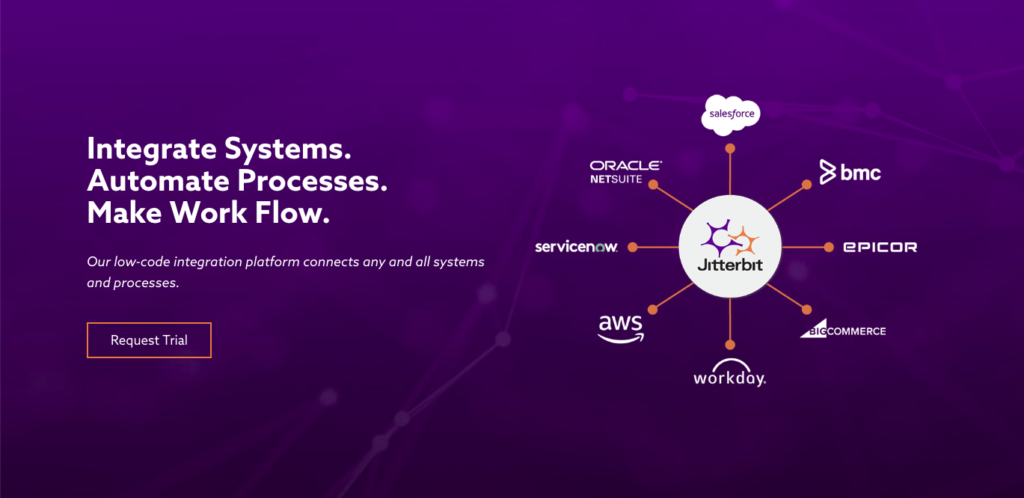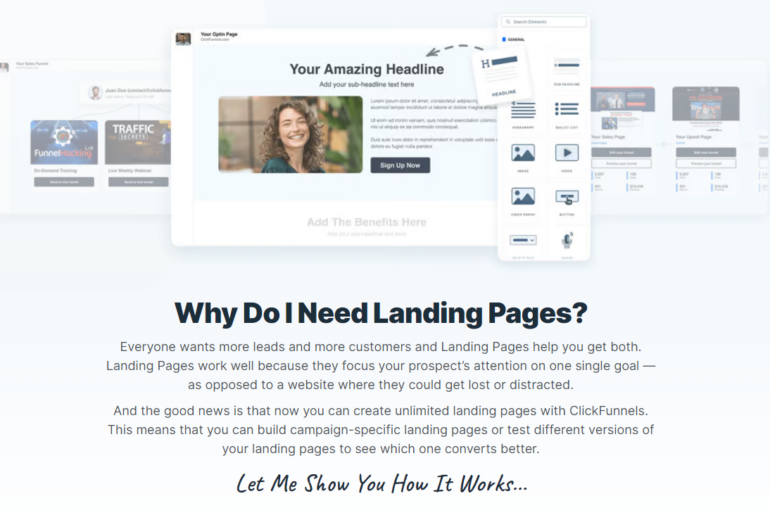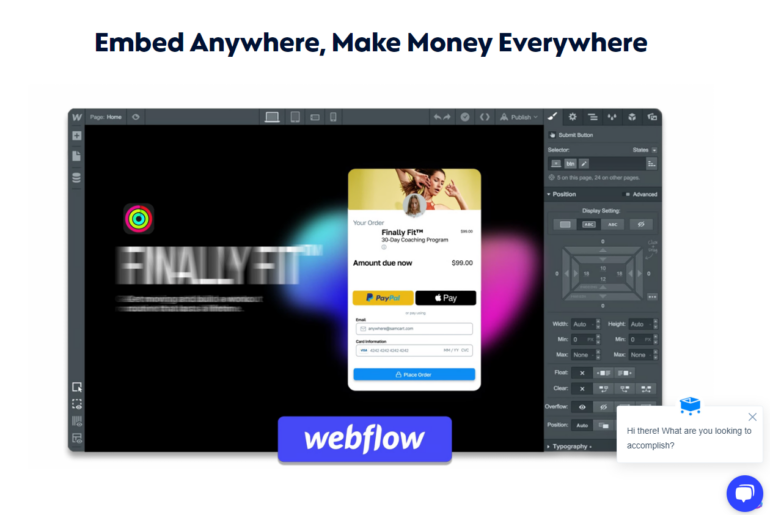Data integration has become indispensable in the digital age, where most businesses rely on multiple online channels to connect with customers. Luckily, some tools make collecting and organizing data so much easier.
Let’s take a look at the best data integration tools of today.
Top 8 Data Integration Tools
Here are the eight best options if you’re looking for a data integration tool:
| Integration Tool | Type | Pricing |
| Hevo Data | Closed-source, managed ETL service | Starts at $239 per month |
| ZigiOps | Flexible no-code integration platform | Custom |
| Talend | Open-source data integration platform | $1,170 per user, per month |
| SnapLogic | Cloud-based data and applications systems | $9,995 per year |
| SAP Data Intelligence | Cloud-based data management solution | $11,199 per year |
| Oracle Data Integrator | ETL tool for building, managing, and maintaining data integration | $900 per named user, per month |
| Dell Boomi | On-demand multi-tenant cloud integration system | $549 per month |
| Jitterbit | Point-to-point software integration with artificial intelligence | Custom |
1. Hevo Data
Hevo is an end-to-end data pipeline platform that saves you a lot of time gathering and analyzing data from different sources.
This integration tool has a process consisting of different parts. First, it helps you collect data from various platforms. Then, it transfers the data into a simple, intuitive interface where you can view and analyze data.
The third and most important step in the Hevo process is identifying anomalies in your data. Whenever it finds something, the system will generate a real-time report.
Hevo Features
Hevo has many unique features that make it one of the best data integration tools.
- No-Code ELT Solution
Hevo features a no-code ELT (Extract-Load-Transform) solution that fetches data from different sources, such as your databases, file storage, and the SaaS you use. Compared to traditional processes, ELT promotes simple and fast data integration. Plus, it allows you to load high volumes of data quickly and efficiently.
- Reverse ETL Solution
Hevo loads data from your warehouse to the SaaS applications you use, enhancing data access and synchronization across teams or departments.
- Historical Data Sync
The software fetches data through the Data First Approach, a system that loads data in reverse order. Thus, you get the latest data first.
Moreover, Hevo gathers all data available in your databases as historical data. The information is generated based on the primary keys in the Source objects.
You can enter a specified timestamp to load the data if they are not present.
Hevo Pricing
Hevo offers a free plan that includes unlimited free sources and models. It also allows you to conduct up to one million Events per month.
You can upgrade to the Starter or Business plan if you need more. The Starter package is priced at $2,870 per year or $239 per month. Aside from the perks of the free plan, it allows you to record up to 100 million events.
Meanwhile, the Business plan has custom pricing and is tailored to your data integration needs.
2. ZigiOps
ZigiOps is another no-code integration platform that lets you create powerful integration in minutes. It’s available in iPaaS and on-premises versions.
You can use it to obtain data from the most popular monitoring and DevOps tools.
Plus, it provides out-of-the-box templates for over 30 SaaS applications, such as Salesforce, Jira, and ServiceNow.
ZigiOps system automatically connects the systems and transfers data between them. In turn, you get a complete overview of your operations and make the right decisions faster. It also automates your IT operations for faster issue resolution.
ZigiOps Features
Below are the main benefits of using ZigiOps:
- 99.9% Uptime
ZigiOps guarantees 99.9% uptime for 365 days a year. However, if, in any case, one of their systems goes down, they have a reliable technical support team that can handle the situation fast.
They will also immediately fill in the missing information from your uploaded data. In addition, they follow a stringent data recovery method that prevents you from losing information in case of system downtime.
- Embedded Integration Hub
An integration hub is a tool that lets you connect multiple applications regardless of where they are located, whether they are in different cloud environments or on-premise. If you’re looking to add an integration Huib to your product offering, ZigiOps makes that possible.
- Enterprise-Grade Security
ZigiOps follows the best security practices, including using industry-standard TLS 1.3 and TLS 1.2 encryption algorithms.
The cloud version of the software is only accessible through HTTPS protocols. Thus, the traffic over HTTPS is protected from unauthorized parties. Nevertheless, ZigiOps also supports other protocols such as FTPS and SFTP.
The on-premise version of the platform is installed behind firewalls, and only authenticated users can access it.
- Advanced Data Mapping
ZigiOps features advanced filtering and mapping options. Users can set specific requirements and easily adopt complex use cases within minutes.
In addition, the platform allows you to automate workflows and increase cross-team collaboration.
ZigiOps Pricing
ZigWave, the creator of ZigiOps, doesn’t provide specific pricing for their services.
The subscription price is based on the use case complexity. You will need to book a pricing meeting with ZigiWave to know how much your data integration needs will cost.
3. Talend
Talend is among the big data integration tools used by over 4,000 organizations. It’s a free, open-source tool that gathers diverse datasets and converts them into a consistent format that you can load into several third-party applications.
Over one-third of Fortune 100 companies in the U.S. use Talend as their data integration tool.
Talend combines rapid data integration, mapping, and transformation in a single platform. With it, you can collect the right data from diverse sources quickly and effectively.
Talend Features
Talend has many valuable features. Some of the most useful ones are:
- Simplified Data Integration
Talend has a unique approach that simplifies data integration. Primarily, it helps businesses virtually integrate any type of data from any source to any data destination, whether using on-premise or cloud-based databases.
In addition, it builds data pipelines and runs them anywhere. Lastly, Talend combines data quality and data sharing in a simple, unified solution that’s easy to use and deploy.
- Data Preparation
Talend helps you quickly prepare data for trusted insights so your analytics team won’t spend much time cleaning data. The platform’s data preparation process is self-service and browser-based to help you easily identify errors and share the data.
Moreover, Talend’s data preparation puts data governance in your hands. You can set access based on specific roles to ensure that your employees will only find the data they need.
- Data Inventory
Talend offers a lightweight solution geared for data proofing. With simple tools for data management, your team can easily find and improve the data they need.
Talend’s Data Inventory also gives you insight into the trustworthiness of your data. You can identify and diagnose issues with your data through the Trust Score.
- Change Data Capture
Talend’s Change Data Capture gives your team real-time capabilities to move data faster by replicating only the most recent changes. This advanced technology for data replication significantly reduces loading time and resource costs.
With a centralized data warehouse, getting a large volume of data becomes extremely easy.
Talend Pricing
Talend data integration service costs $1,170 per user per month, but they also have a basic free option available.
4. SnapLogic
SnapLogic is an intuitive software integration platform that allows you to quickly and easily automate your data and applications.
This software brings together a wide range of functionality in a simple-to-use package. If you need to create a simple source for your integration, SnapLogic might be the tool for you.
SnapLogic Features
What does SnapLogic offer? Here are some of them:
- Application Integration
Manually integrating countless applications is a tedious and often costly task. If you use a lot of applications, you’ll benefit from an automation tool like SnapLogic.
The app connects different applications with no coding experience required. Anyone authorized in your team can quickly connect to the applications for improved workflows.
- API Management and Development
SnapLogic provides a seamless, click-not-code solution for data management. It allows you to build a rich digital ecosystem and integrate it with your products and services.
- Data Automation
SnapLogic ETL allows you to source and transform data at scale and quickly load data into cloud data warehouses, all through a drop-and-drag functionality.
In addition, the platform’s no-code approach to data integration makes it easy for your analytics team to create data pipelines and hydrate data lakes. This helps you make informed business decisions that improve customer experiences.
- Artificial Intelligence
Iris AI is SnapLogic’s latest innovation. It uses artificial intelligence to automate highly repetitive tasks, eliminating any integration backlog that hinders your workflow. The SnapLogic Integration Assistant uses machine learning to predict the next step in building a data pipeline with up to 90% accuracy.
SnapLogic Pricing
SnapLogic is priced on an annual subscription. The basic plan costs $9,995 and includes API, cloud data integration, data management, integration management, pre-built connectors, and web services.
5. SAP Data Intelligence Cloud
SAP is a comprehensive data management solution that covers all aspects of data integration. It uses a data fabric to discover, connect, and orchestrate disparate data sources into a unified platform that delivers actionable insights.
You can extract and transform different datasets or enrich data with SAP data services.
SAP Features
Here’s an overview of the SAP features and capabilities that you need to make a note of:
- Data Processing
SAP data intelligence provides a holistic way to manage, integrate, and process your business data.
With SAP, you can discover and connect data from various locations into a single data fabric. It also enables you to employ intelligent data processes by organizing complex data with repeatable and scalable learning pipelines.
- Hybrid Data Management
SAP creates a centralized repository of data and processes it into insightful information. You can automate and re-use on-premise or cloud processing engines and manage complex types of data across distributed environments.
- Data Profiling
Another strength of SAP is it has options for data profiling. Data profiling is the process of reviewing data sources for content and quality. For example, you can analyze data to identify quality problems.
It’s a crucial part of data warehouse and business intelligence and data conversion and migration. It also helps source system data quality projects.
With data profiling, you can collect data based on type, length, and recurrence patterns. You can also tag data with descriptions, keywords, and categories, perform data quality assessments, discover metadata, and assess its accuracy.
- Data Orchestration
With SAP, you can integrate and orchestrate massive volumes of data, streamline and govern machine learning-driven innovation, and connect insights to your business processes.
The platform allows a searchable data fabric to help you monitor, improve, and maintain data quality.
SAP Pricing
The starting price of SAP Integration Suite is $11,199 per year. However, they have a free plan.
Access to the free tier services doesn’t expire, and once you reach the service limit, you have the option to upgrade your account to the paid service.
6. Oracle Data Integrator
Oracle is among the most popular big data integration tools. It offers a wide array of services, from high-performance batch loads to SOA-enabled data services.
The system rests on a flexible and high-performance architecture with big data support. It can move bulks of data fast and handle complex data transformations.
Oracle Data Integrator is fully integrated with the Oracle Cloud and similar Oracle technologies. It can also work with third-party applications.
Oracle Data Integrator Features
Oracle has many functionalities that make it one of the best data integration tools you’ll find today. Here’s an overview of its key features:
- High-Performance Data Transformation
Oracle uses Extract, Transform, Load (ETL) to gather data from different sources into a unified repository. The push-down transformation of data minimized the impact on your source systems.
In addition, the software uses the power of your CPU and memory to execute data transformations instead of relying on a separate ETL server, saving you costs in the long run. Lastly, Oracle supports native big data support. You can generate Apache Spark code to transform big data and perform executive data mappings.
- Out-of-the-Box Integration
Oracle has a huge library of knowledge modules that simplifies the process of integrating sources and targets. The system’s modular design gives you more flexibility when connecting to multiple systems.
ODI also uses best practices to simplify the process of mapping data between systems. You can re-use data mapping to speed up the development of integration logic and enhance productivity.
- Heterogeneous System Support
ODI has pre-built data connectors for Cassandra, Hive, Kafka, Sqoop, and other databases, allowing you to integrate any data from any source.
- Oracle GoldenGate Integration
The GoldenGate technology enhances ETL with data replication to keep your data warehouses and databases synchronized. As such, it speeds up data loading and data transformation into a big system.
- Oracle Enterprise Manager Integration
The Enterprise Manager works on managing and monitoring data from one location to another, thereby improving productivity. You can manage all ETL and integration activities within the Enterprise Manager platform.
ODI Pricing
ODI license is priced based on a “named user plus” or per processor. The cost is around $900 per named user, plus $198 for the software update and support.
Alternatively, enterprises can pay $30,000 per processor and $6,400 for the software license and support. Here’s the detailed pricing of the ODI plans.
7. Dell Boomi
Boomi is an on-demand multi-tenant cloud integration system for connecting processes, apps, data, devices, and other things. It’s designed to enhance workflow and boost productivity by scrapping the need for manual data entry.
For example, Dell Boomi transfers data reported in Quickbooks into your database and records your online sales on Shopify.
Boomi leverages the power of cloud systems to connect your applications and information seamlessly. It empowers your company’s digital transformation by dealing with technical difficulties so you can focus on running your business.
Dell Boomi Features
A tool packed full of offerings, here are some of the key features you’ll expect from Dell Boomi:
- Simplified Integration
Boomi utilizes a rich library of pre-made connectors. Upgrades are programmed, and the entire system is secure.
Users can send, create, and deal with integration easily.
The platform connects over 1,000 endpoints and more than 200 applications. Its full capabilities enable your employees to configure the information and organize transactions at a fast pace.
- Distributed Architecture
Boomi’s Atom, a lightweight runtime engine, enables integration to be deployed wherever needed. So, whether you’re running your data in a public or private cloud, across on-premise, or multi-cloud environments, Boomi can work.
It supports large data volumes without sacrificing performance and low latency.
- Pervasive Intelligence
Boomi offers suggestions and best practices for a more efficient workflow. For example, it generates maps and functions for new integration to streamline the most challenging aspects of building integration.
It also allows users to configure the connector query with just a few clicks and automatically suggests resolutions for common error messages.
- Low Code, Visual UI
Boom features a drag-and-drop visual user interface that ensures speed and flexibility to support a wide range of projects. Most application integration can be done on the Boomi UI, but for complex or specialized integration, the platform offers developer tools to ensure project delivery.
Dell Boomi Pricing
Dell Boomi licenses are billed monthly, starting at $549. They also provide a 30-day free trial, which you can take advantage of to see if the tool matches your specific needs and goals.
8. Jitterbit
Jitterbit is a point-to-point software integration platform with artificial intelligence to support quick and simple data transfer. The system is designed to streamline your business processes and deliver projects quickly.
Jitterbit is a cloud-based software capable of ETL to support data unification and exploitation from all sources. With it, you can rapidly connect your on-premise and cloud applications and your Saas and infuse AI into any business process.
Jitterbit Features
Jitterbit has several features that make it a powerful integration tool. Some of which include:
- Data Cleansing
Jitterbit has a data cleaning tool that eliminates the hassle of cleaning and changing data between systems. This automated function corrects data errors before loading them into their destination.
- Powerful ETL Tools
Jitterbit’s ETL tools provide an intuitive approach to data integration that boosts efficiencies, eliminates risks, and reduces development costs. It’s also an open-source ETL tool that works well with Oracle, MySQL, and SQL servers.
- Monitoring
Jitterbit has a system of dashboards and alerts that allow you to monitor your integration for any issues and spot errors or problems before they get bigger and become costly. In case any error arises, it sends a real-time notification to the people in charge.
- Big Data Support
The platform uses high-performance parallel processing algorithms that enable users to transfer large volumes of data quickly and seamlessly. The algorithm can tackle projects that could take several months or weeks to complete into days.
Jitterbit Pricing
Jitterbit has three plans: Standard, Professional, and Enterprise. They offer custom pricing based on your requirements.
What Is Data Integration and Why Do You Need It?
Data integration is collecting data from disparate sources in a single, centralized location. Given the numerous platforms businesses use these days, it makes sense to create a single repository of data that they can use to streamline various processes.
With data growing exponentially and coming in varying formats, data management helps your business drive meaningful insights. Companies that utilize big data integration tools have significant advantages over their competition.
Let’s look at the major benefits of data integration for businesses and organizations.
Simplified Business Intelligence
By creating a unified view of data from various sources, data integration streamlines the process of business intelligence (BI). Unlike business analytics, BI focuses on describing past and present data to help with strategic decision-making.
With all data organized in one place, analysts and executives can easily view and comprehend the available data sets to obtain actionable information. In addition, they can compile information for a more accurate evaluation of data.
Better Collaboration
Having access to data improves system unification and overall team collaboration. Regardless of their departments or locations, employees can get the data they need for their projects.
Moreover, data integration improves teams’ efficiency by eliminating the tedious process of manually collecting and updating data.
With data integration tools, companies and organizations can significantly reduce the time to prepare and analyze data. Such tools require no coding, mapping, or maintenance and the data is readily available whenever they need it.
Data integration allows executives to access relevant data and insights that will optimize operations. Plus, it allows teams to focus on improving internal communications and partnerships with vendors and third parties.
Data Accuracy
Manually collecting data is susceptible to human errors. Plus, reports need to be revised and updated regularly in the absence of a data integration solution.
Modern systems ensure that data is up to date. They also significantly reduce, if not eliminate, inaccuracies in data. Therefore, businesses will have access to quality information.
Data-Driven Insights
Integration tools help businesses scale by providing access to data that drive innovative insights. For example, seeing through the customer’s lens allows brands to conduct demand forecasting and develop marketing strategies to improve satisfaction and retention.
Once data are collected, stakeholders can perform further analyses to generate actionable insights. These insights can be based on various performance indicators (KPIs) and other metrics that help businesses pinpoint what operations need improvement.
Choosing the Right Data Integration Tool for Your Business
Data integration tools are essential in every organization as they create a single source of truth for all your data that supports decision-making, operational processes, and workflow.
However, it’s important to choose the tool that matches the requirements of your organization.
Below are some of the factors to consider when looking for data integration tools:
Type
Data integration tools come in several types, namely:
- Open-Source
These tools rely on the open-source community or connectors, meaning that the software’s source code is freely accessible to all. As such, developers can modify and edit the source codes according to their needs.
Open-source platforms are more cost-effective than their commercial proprietary counterparts.
- SaaS (Software as a Service)
These tools are either managed or self-service, so they are effortless to get started. SaaS integration tools are also more scalable and reliable than their open-source counterparts.
The most popular pricing option for these tools is paying for the amount of data integrated per month. It can range from a hundred to thousands of dollars.
- Enterprise
Big data integration tools are often the most expensive but are also the most comprehensive. Services often include data transformation, governance, and management.
Data Source Coverage
When choosing a data integration platform, a significant factor to consider is that all data sources should be covered.
Data sources can vary from one company to another. Some typical data sources are CRM, marketing tools, accounting software, and web tracking platforms.
Start by listing all source systems your organization uses or plans to use and check if the data integration tool covers everything. Some tools have limits on the number of sources you can integrate, so check this before committing to a vendor.
Destination Coverage
Most data integration tools support data warehouses, relational databases, and data lakes that allow you to build a single source of truth for your organization.
Security
Since you are working with data, you want an extremely secure and reliable tool. When choosing an integration tool, check how it connects to your data source and where it stores your data.
Pricing
Pricing is another significant factor that will dictate your choice of data integration solution. Enterprise solutions are the most expensive, ranging from $5,000 to over $10,000 a month.
Which Among the Data Integration Tools Should I Choose?
Data integration tools are necessary for ensuring that your business data is kept secure and easily accessible to your employees.
A data integration tool promotes data simplification. It brings in data from various sources in a centralized location so it can be viewed, analyzed, comprehended, and managed efficiently by authorized people in your company.
As a result, data integration saves you time and effort tracking and analyzing data. When choosing an integration tool, consider the type, data source, destination coverage, and price that fits your needs.
Data Integration Tools FAQs
Now that you have an idea of the best data integration tools, here are answers to common questions that will make you understand these tools better:
1. Is SQL a data integration tool?
SQL Server is a platform for building enterprise-level data integration and transformation. It is designed to solve complex problems by loading data warehouses, cleaning and mining data, and managing SQL server objects and data.
2. What is ETL data integration?
ETL stands for “extract, transform, load”. It’s a data integration process that combines data from different sources into a single destination and loads it into a data warehouse or other target system.
3. Is ETL the same as data integration?
The main difference between ETL and data integration is that the latter refers to combining data from multiple sources to provide a unified view to the users. In contrast, ETL is the process of extracting, transforming, and loading data.
4. Why do we use data integration?
Data integration equips businesses with meaningful insights that help leaders and executives understand the company’s current operations and the risks and opportunities it faces in the marketplace. Moreover, data integration is essential for collaborating with a company’s external partners, such as vendors, suppliers, and governmental agencies.
5. What are data integration methods?
There are five methods used for integrating data. These are:
- Manual Data Integration: This occurs when a data manager oversees all aspects of integration.
- Middleware Data Integration: Uses software that connects applications and transfers data between databases.
- Application-Based Data Integration: Involves using software applications for locating, retrieving, cleaning, and integrating data from different sources.
- Uniform Access Integration: Involves accessing data from even more disparate sets into a unified location.
Common Storage Integration: Works in the same way as uniform access, except that it involves creating and copying data in a data warehouse.







